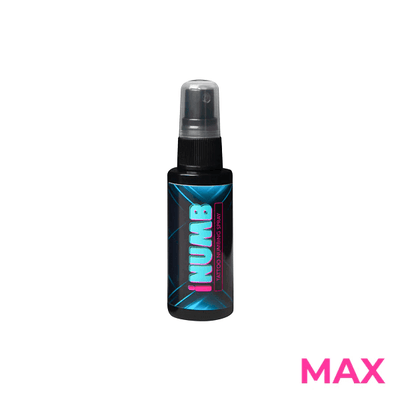Starting your first tattoo journey can be exhilarating, but for many, the thought of the needle buzzing can stir up a bit of anxiety—especially about the pain involved. It's no wonder that tattoo-numbing ointments have become a hot topic, wrapped in myths and conflicting stories. Are they a tattoo session saviour, or do they just complicate the process?
With all the mixed messages floating around, figuring out what's true can be tough. Let's break down the myths and facts, making sure your next tattoo experience is as clear and comfortable as possible.

Myth 1: Numbing ointments completely eliminate pain
Fact: Numbing ointments can significantly reduce the sensation of pain, but they do not completely eliminate it.
Explanation: Numbing ointments primarily contain active ingredients like lidocaine or prilocaine, which are local topical anaesthetics. These substances block nerve signals in the skin, which reduces the ability to feel pain at the tattoo site. However, the effectiveness is based on the individual's pain threshold, the concentration of the active ingredient, and the area of the body being tattooed. Some people may still experience pressure or mild discomfort despite the numbing effect.
Myth 2: Numbing ointments can affect tattoo quality
Fact: If used properly, numbing ointments do not compromise the quality of the tattoo.
Explanation: There’s a concern among some that numbing ointments can alter the texture of the skin, making it more difficult for tattoo ink to settle correctly. However, when applied according to the recommended guidelines—such as the correct amount and proper timing before the procedure—there should be no negative impact on the tattoo's outcome. It's important to follow the product's instructions and possibly seek advice from the tattoo artist. Some artists may prefer not to work on numbed skin due to personal preference or past experiences with specific products that may have caused skin irritation or other issues.

Myth 3: All tattoo artists recommend using numbing ointments
Fact: Recommendations on numbing ointments vary widely among tattoo artists.
Explanation: Tattoo artists have differing opinions on the use of numbing products. Some artists are comfortable with clients using them, especially if it helps the client sit still and endure longer sessions. Others might avoid them due to concerns about possible allergic reactions, skin irritation, or changes in skin texture that can affect their work. Additionally, some artists believe experiencing pain is part of the tattoo process and prefer not to use numbing agents. Clients interested in using a numbing product should discuss this with their artist during the consultation to ensure it fits within the artist's practice and preferences.
Myth 4: Numbing ointments are safe for everyone
Fact: Numbing ointments are not universally safe and are not recommended for everyone.
Explanation: While numbing ointments can provide pain relief, they are not suitable for all individuals. People with allergies to local anaesthetics like lidocaine or prilocaine should avoid these products. Additionally, individuals with certain skin conditions, such as eczema or psoriasis, might experience worsening symptoms or adverse reactions. Pregnant or nursing women are also advised to consult a healthcare provider before use due to potential risks. It’s important to read labels carefully and consider any personal health conditions before applying these products.
Myth 5: Numbing ointments can be applied at any stage of the tattooing process
Fact: Numbing ointments are most effective when applied before the skin is broken.
Explanation: The optimal time to apply a numbing ointment is before the tattooing process begins. This allows the ointment to fully absorb into the skin and numb the area effectively. Applying numbing ointment after the skin has been broken can be less effective and might even interfere with the healing process or the ink settling into the skin. Some tattoo artists may also apply a different type of numbing agent during the tattooing process, specifically designed for use on broken skin, to maintain comfort throughout longer sessions.
Myth 6: Any type of numbing product is suitable for tattooing
Fact: Not all numbing products are suitable for tattooing; specific types are formulated on intact or broken skin.
Explanation: There are various types of numbing products available, including tattoo numbing creams, gels, and sprays, each designed for different stages of medical and cosmetic procedures. For tattooing, choosing a product specifically intended for use on intact skin before needle penetration is crucial. Products meant for post-procedural pain or broken skin might not provide effective numbing for the initial tattoo application and could potentially harm the skin or affect the ink’s appearance. Users should select a product labelled for pre-procedural tattoo use to ensure safety and effectiveness.
Final thoughts

Understanding the myths and facts about tattoo numbing ointments is crucial for anyone involved in tattooing. It ensures you're well-prepared and can manage pain effectively for a smoother tattoo session.
For our readers, especially tattoo artists looking to enhance their craft, don't forget to check out our website for the best tattoo supplies. We offer a wide range of top-quality tattoo inks, tattoo-numbing creams, and aftercare products designed to keep your artistry at its peak. Visit us today and ensure you have everything you need for a seamless tattooing experience.




























































 Studio supplies
Studio supplies












 Power & batteries
Power & batteries







 Aftercare
Aftercare



















 Apprentice
Apprentice


 Piercing & jewellery
Piercing & jewellery







 PMU supplies
PMU supplies



 New arrivals
New arrivals
 Gift vouchers
Gift vouchers
 Shop all
Shop all










































